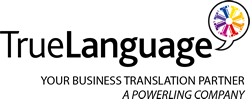Medical translation is a high-stakes discipline where precision is of the utmost importance. Whether it’s translating patient consent forms, prescription labels, or doctor’s notes, medical content must be accessible to both professionals and patients. However, the challenge arises in balancing technical medical terminology with language that the average person can understand. The intersection of medical jargon and layman’s terms in translation requires a strategic approach to ensure clarity, accuracy, and compliance with regulatory standards.
This article explores the nuances of translating medical content, the risks of mistranslation, and best practices for bridging the gap between complex medical terminology and patient-friendly language.
The Challenge: Bridging Two Linguistic Worlds
Medical professionals use highly specialized terminology to communicate with precision. These terms often derive from Latin or Greek roots and may be unfamiliar to the general public. In contrast, patients require clear, comprehensible language to understand their diagnosis, treatment options, and medication instructions. The role of a medical translator is to navigate these two linguistic worlds without compromising accuracy.
Consider the following example:
- Original medical term: Hypertension management through beta-adrenergic blockade
- Layman’s translation: Controlling high blood pressure with medication that slows the heart rate
Both statements convey the same message, but the second is much more understandable to a non-medical audience.
In multilingual healthcare settings, this issue is magnified. A mistranslation of a technical term could lead to misdiagnosis, incorrect treatment, or patient noncompliance due to confusion.
Hypothetical Examples of Medical Jargon vs. Layman’s Terms in Translation
- Diagnosis Explanation:
- Medical Jargon: “The patient exhibits symptoms consistent with myocardial infarction.”
- Layman’s Translation: “The patient shows signs of a heart attack.”
- Medication Instructions:
- Medical Jargon: “Administer 5 mg of bisoprolol once per diem for cardiac function optimization.”
- Layman’s Translation: “Take one 5 mg tablet of this heart medicine once a day.”
- Surgical Consent Forms:
- Medical Jargon: “A bilateral salpingo-oophorectomy will be performed to mitigate risk factors associated with BRCA1 mutation.”
- Layman’s Translation: “We will remove both ovaries and fallopian tubes to reduce your risk of cancer.”
Translators must understand the context of these medical statements to determine when to retain technical terminology and when to simplify for comprehension.
The Risks of Mistranslation
Errors in medical translation can have serious consequences. Some of the most common risks include:
- Patient Confusion: Patients may misunderstand their condition or prescribed treatment.
- Medication Errors: Incorrectly translated dosage instructions can lead to overdoses or ineffective treatment.
- Legal and Compliance Issues: Regulatory bodies, such as the FDA and EMA, have strict language requirements for medical documentation.
- Inaccurate Medical Records: Mistranslations in patient charts can lead to misdiagnosis or inappropriate interventions.
One real-world example occurred when an emergency room misinterpreted the Spanish word intoxicado as “intoxicated,” leading doctors to assume a patient had a drug overdose rather than a brain hemorrhage—resulting in a severe medical mishap.
Best Practices for Translating Medical Jargon
- Use a Dual-Layer Approach
- Provide both the medical term and a layperson-friendly explanation when necessary.
- Example: Hyperthyroidism (a condition where the thyroid gland is overactive, leading to symptoms like rapid heartbeat and weight loss).
- Rely on Certified Medical Translators
- Professional medical translators are trained to recognize when to simplify language and when to retain accuracy.
- Employ Glossaries and Terminology Management Systems
- Maintaining standardized glossaries ensures consistency across documents and languages.
- Test for Comprehensibility
- Conduct readability tests with focus groups to ensure that translated materials are understood by the target audience.
- Follow Regulatory Compliance Standards
- Medical translation must align with industry regulations such as ISO 17100 (standards for translation services).
Summarizing
The intersection of medical jargon and layman’s terms in translation is a delicate balance between precision and clarity. Skilled medical translators play a crucial role in ensuring that vital healthcare information is accessible, accurate, and understandable.
At TrueLanguage, we specialize in medical translation services that uphold the highest standards of accuracy and compliance while ensuring clear communication for all audiences.
📞 Need expert medical translation services? Contact TrueLanguage today to discuss your project needs.


